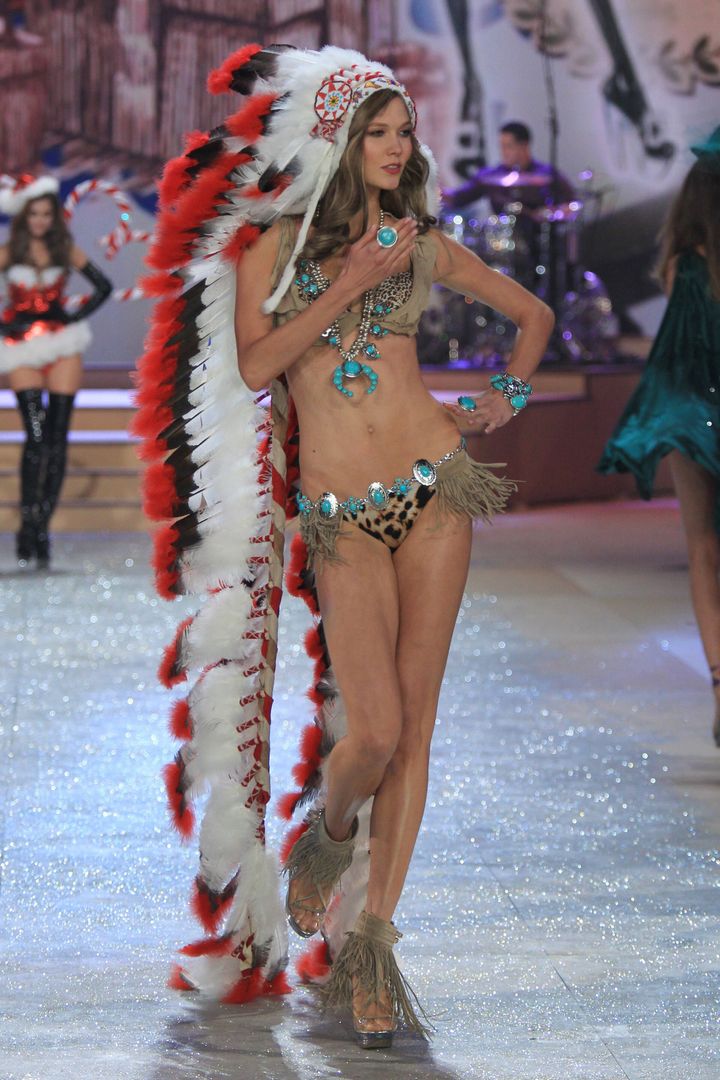
It's no coincidence that "native" is now becoming a trigger word in fashion and style. As modern life accelerates into a future that gets more virtual with every passing year, consumers are increasingly experiencing a sense of rootlessness. As growing numbers of us move jobs, cities and even countries, fewer people feel that they belong in any particular place. We ask, "Where are you from?" and mostly hear a life itinerary: "I was born in A, but we moved to B and I went to high school in C and college in D, then I got a job in E."
We listen for clues of rootedness, of deep resonance with a place and its culture. We feel the attraction of people, places and things that seem connected with the authenticity of a disappearing past. The style of beards and mustaches featured in old sepia prints and the Oscar-nominated Lincoln movie are now part of the look for switched-on personalities such as Johnny Depp, Jake Gyllenhaal and David Beckham.
The call of more authentic native worlds returns in cycles, often heard most keenly by creative types and pioneering thinkers. Consider how Picasso transformed art and modern culture with his 1907 "Les Demoiselles d'Avignon," influenced by African tribal masks he saw in a Paris museum, or how Carl Jung was transformed by his 1925 visit with the American Indians in Taos, N.M. Mythologist Joseph Campbell mapped common elements of tribal myths in his 1949 book The Hero With a Thousand Faces, and that in turn influenced George Lucas as he was writing Star Wars. And an enduring interest in Native American cultures bridged to the entertainment world with award-winning 1990s films Dances With Wolves, Smoke Signals and Pocahontas.
After more than a generation of virtual immersion in digital everything, we're once again trying to (re)connect with ground zero reality, albeit with digital assistance. The triple-Oscar 2009 movie Avatar gave a characteristic 21st-century spin to the yearning for native connections. Paraplegic Marine Jake Sully finds love, liberation and purpose on the distant planet Pandora as he sides with the native Na'vi people against destructive fellow humans. He literally goes native.
It's the Real ThingIf the yin of modern style is the post-industrial brushed steel, monochrome, pared-down iDesign minimalism of Apple -- all whites, blues, grays and, of course, black (turtlenecks) -- then the emerging yang taps the roots of pre-industrial cultures.
Designers and artists producing everything from rugs, blankets and home décor to handbags, skirts and jackets have used vibrant Native American colors and strong geometric patterns. Even sneakers have had a "native look" makeover. For most millennials, the look is fresh; for their parents and grandparents, it's the second or third time around. Meanwhile, for Native Americans, it's a mixed blessing: It's great that consumers are into their design ethos, but not so great that the designs are not being produced by Native Americans themselves. In fact, it's illegal under the Indian Arts and Crafts Act of 1990 to market any product that falsely suggests it's made by Native Americans. Hence the lawsuit filed against Urban Outfitters for its Navajo line; the tribe's name has been a registered trademark since 1943. (American Indians have long been astute in realms of justice; the U.S. government has borrowed numerous indigenous principles for its criminal justice systems for more than a century.)
This court case highlights the commercial issues of native and tribal arts as they ride a hot trend. In modern terms, the patterns and palettes that native peoples developed to differentiate one tribe from another were in effect the logos and liveries of brand franchises. If a design or a name is now distinctive enough to be associated with a native group (e.g., Navajo, Maori, Samburu), then there's a good case to argue that the people are entitled to intellectual property protection.
Australia's First Peoples are way ahead of the curve when it comes to authenticity. With a flourishing market for Aboriginal art and artifacts, it's a crucial point for dealers and buyers. This intense preoccupation with "the real thing" is a manifestation of essentialism, our deep, intuitive conviction that there is a real difference between an authentic original and a totally perfect copy. The original has soul and the copy is like a zombie; the original is authentic and the copy is a fake.
For some, native style is about feeling a connection with the essence of native and tribal peoples. For others, it's far lighter. It's about hacking a recognizable set of visual cues to create something cute and even sexy for fancy dress at Halloween. That's certainly what's behind the craze for the sort of feathered headdresses and hair extensions popularized by singer Ke$ha.
Beyond art, design and apparel, the "going native" trend is also rolling through music. The HBO series Treme stirred up global interest in the Mardi Gras Big Chiefs and second-line grooves of New Orleans' music. Less in the media, but far more in a street near you, is the growing global trend for community-based samba drum bands and dance groups -- big beats and tribal moves drawing inspiration from the Carnival samba processions of Rio de Janeiro and the deep-rooted African traditions of northeast Brazil.
To today's travelers, both real and virtual, the people, places and artistic expressions that feel organically connected to a true history or a vibrant, turned-on now are very attractive and will only become more so.
This is the 12th in a series of 14 posts expanding on Salzman's forecasts for 2013 in her annual trends report, a program of global communications group Havas Worldwide. This year's book, What's Next? What to Expect in 2013, was published on 12/12/12 and is available at 120MBooks.com. Salzman is CEO of Havas PR North America and an internationally respected trendspotter.